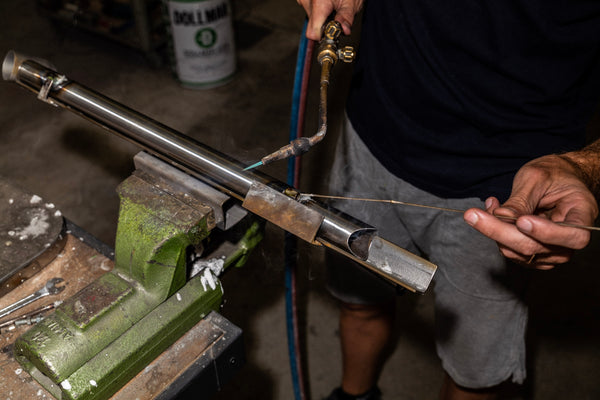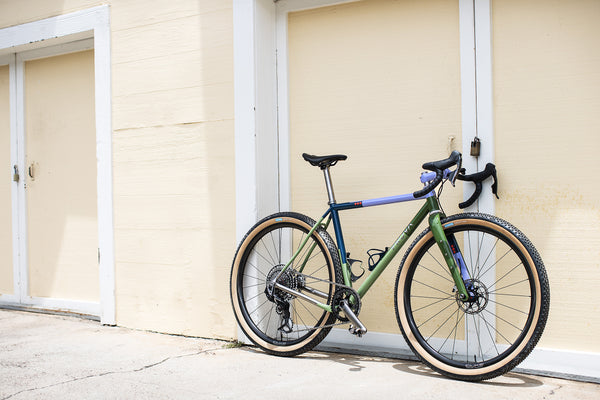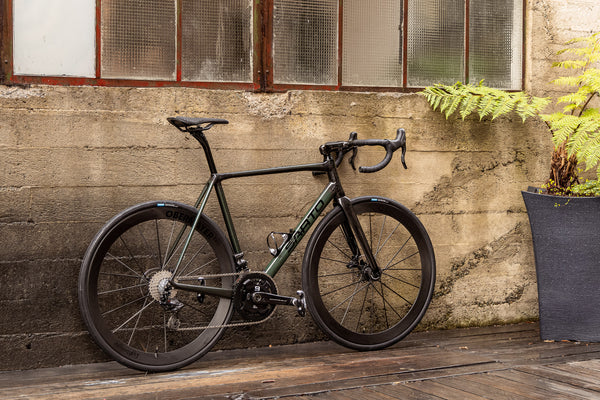It is February of 2012. The group of cyclists are somewhere north of Saguaro National Park, fighting a screaming crosswind in a rotating echelon while dodging ominous Arizonan thunderheads. The noise is deafening. A minivan roars past the left of the group in the opposing lane, sliding door open, photographer precariously hanging out the side. A hatchback followed, its front passenger bellowing from the rolled-down window “FULL GAS!” The riders react as if on cue, ratcheting up the pace, early-season legs visiting levels of exertion and intensity not known since last September. Their matching bikes wander under the effort, carving miniature helixes on the desert tarmac. This is pro team camp, and right now, between sponsor visits, seminars, and coffee stops, it is hell.
The strain of the exertion begins to take its toll, with riders falling off the pace, tailing behind like the detritus of a comet. The older, wizened riders are the first to go. They have nothing to prove this early in the season, their racing calendar already set for the year. The younger, newer riders, nipping at each other’s heels for a chance at competition, are the stalwarts in the formation. Soon, though, they too begin to falter. One of those younger, hungrier riders is beginning to suffer. He’s especially starving, a phenomenon who’d rocketed from rank beginner a year prior to being offered a professional contract six months later. He is untested, inexperienced, and has everything to prove to everyone around him. The director sportif once again motors alongside the group as they break 60 kilometers per hour, noticing the young hothead in difficulty. The director gets close as the rider dangles near the back, close enough for conversation from vehicle-to-bicycle, even given the harrowing conditions.
“AS YOU PULL THROUGH, GET REALLY CLOSE TO THE GUY YOU’RE OVERTAKING!”, the legendary sprinter-turned-coach screamed. It was a lesson the inexperienced hothead had never learned, so briefly raised in a cycling culture obsessed with going fast on a bike, but not going well. He jumped back into the rotation, heeding the words of his director. As he reached the pointy end of the echelon, he passed his teammate with mere millimeters to spare, nearly brushing his partner’s handlebars with his furiously spinning legs, squeezing every bit of draft from the formation. It worked. After five minutes, the director eased the pace – and the young punk was still there, with the team’s hard-headed remnants. He learned an important lesson the day, one that took signing his life away as a professional cyclist to learn: It doesn’t matter how fast you can go if you don’t know how.
It’s a common thread. How did we get here as a cycling community, sending riders to the very pinnacle of the sport lacking basic bike riding technique? Was it the advent of the power meter, the reduction of riding to science and watts? Or was it the rise of Strava, and the increasingly individualistic pursuit of riding? Maybe the fall of the Great American Road Race, and the rise of the ever-more-inclusive Gran Fondo and its varying riffs? That’s not to say there’s anything wrong with these things (as we’re ardent practitioners of all of them), but the educational component of road riding has seemingly fallen by the wayside. Education on form, technique, etiquette, safety. Skills that makes riding more fun as they build confidence within the rider. Skills bestowed by the hallowed group ride, the ride with designated leaders, where one had to prove their worth – or their willingness to be educated – to belong, to be invited. At Above Category, we’ve long pined for the educational, social experience of what group riding once was, and what it could be again. “But wait,” you might say, “I don’t race. I don’t ever plan to race. I don’t even like riding with other people. What do I have to gain from learning how to ride well in a bunch?”
The biggest takeaways from structured group riding is safety and confidence. Riding well in a group forces a rider to become predictable, a trait appreciated not only by other cyclists the rider is with, but by motorists and other road users when riding alone. It increases respect for cyclists as whole, improving survivability on the roads for all of us, and builds community relationships that benefit us all. The structured group ride forces riders out of their comfort zones as cyclists in a safer environ, enhancing confidence when riding solo. Confidence that translates to safety on the road, fun while riding, and being the person everyone wants to ride with. It also translates to riding like, well, a pro. Flowing through traffic with ease. Climbing with aplomb. Descending like a smooth, controlled missile.
We’d like to do our part to bring that kind of ride back. Starting this Saturday morning, August 20th at Above Category in Sausalito, and every Saturday thereafter, a different kind of group ride, hearkening back to the days of the leather hairnet, when the group ride was about learning the PRO ropes – and having fun, with the ride patron and their lieutenants teaching the finer points of riding a bike. Led by former professional cyclist Kemi King, the AC group ride is a social education ride to which all – the brand new rider to the seasoned veteran – can partake in knowledge that we all benefit from.
AC SATURDAY RIDES
7:30 AM at Above Category, 42 Caledonia St, Sausalito, CA
2-3 Hour Ride Time
Bring a road bike, helmet, adequate fluids, clipless pedals, and a willingness to learn.
Strava RSVP Here.
Questions? Email us.

















Back to Journal